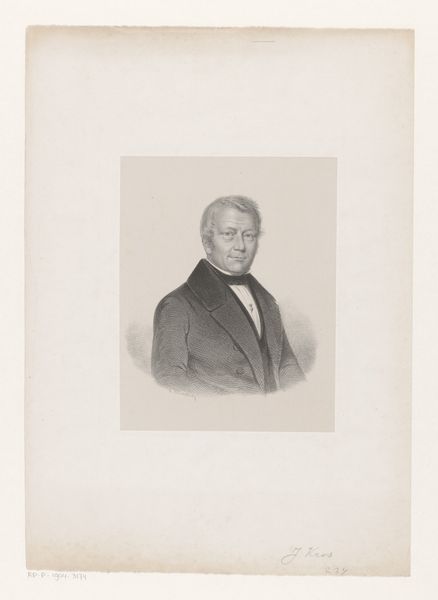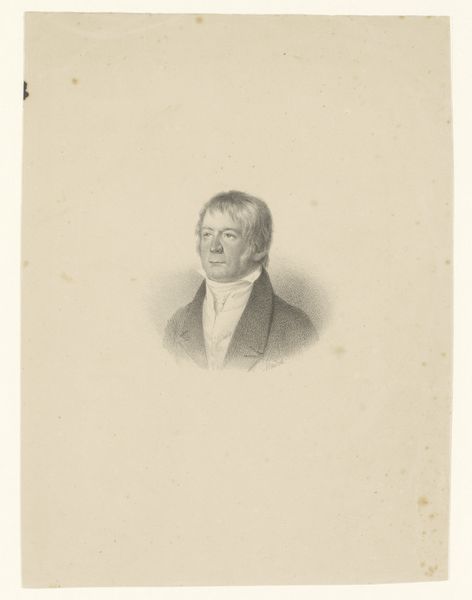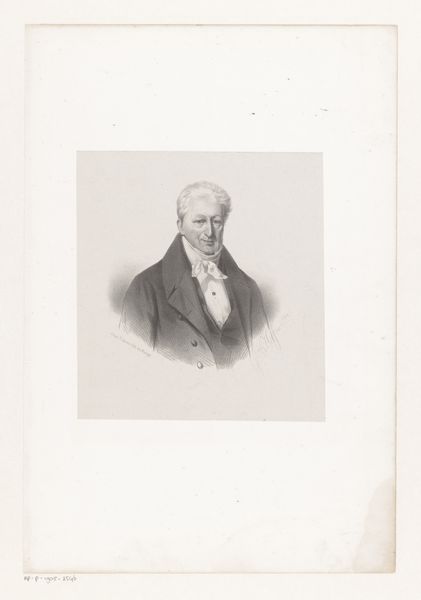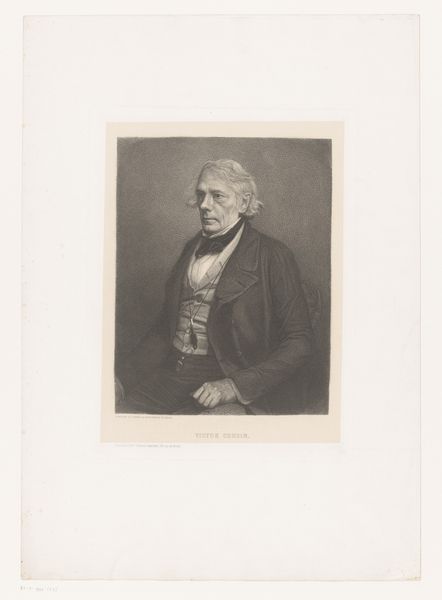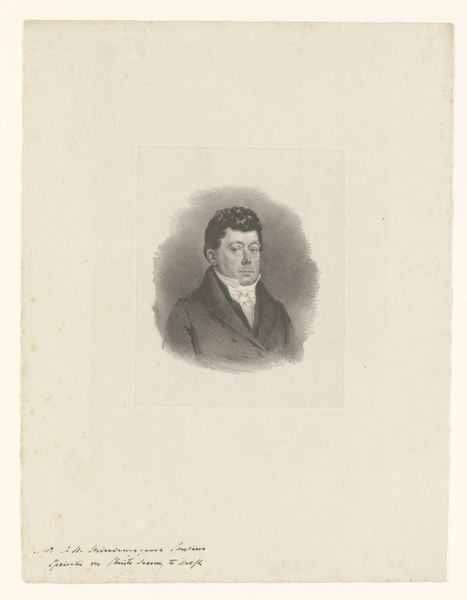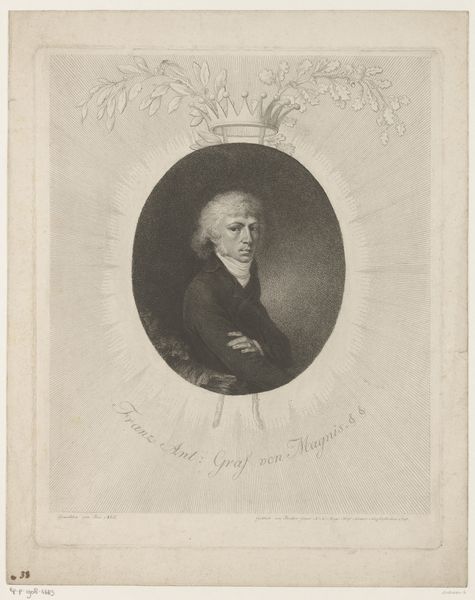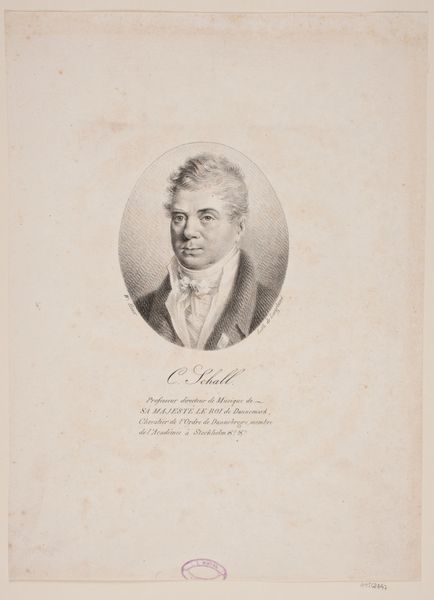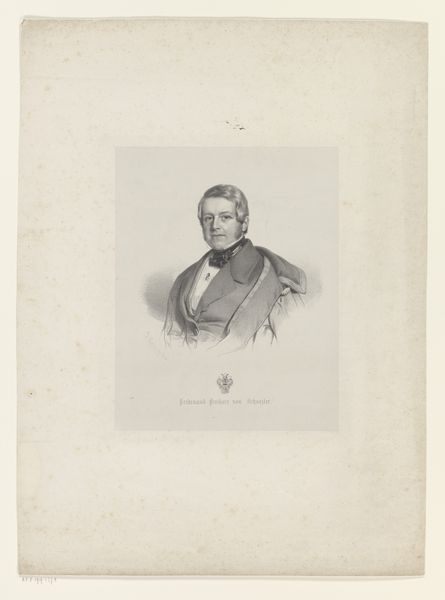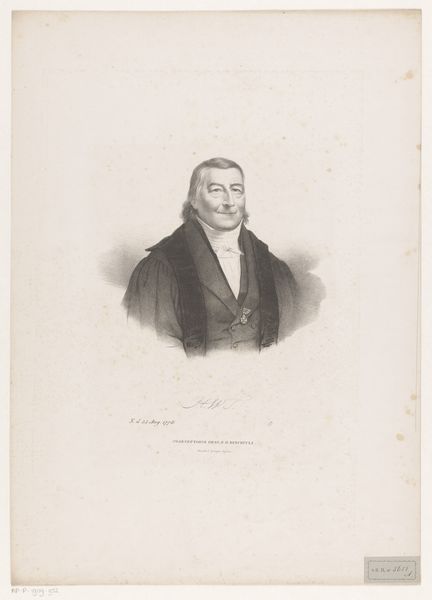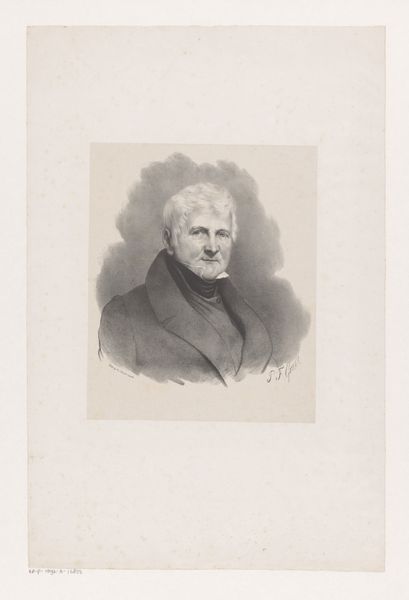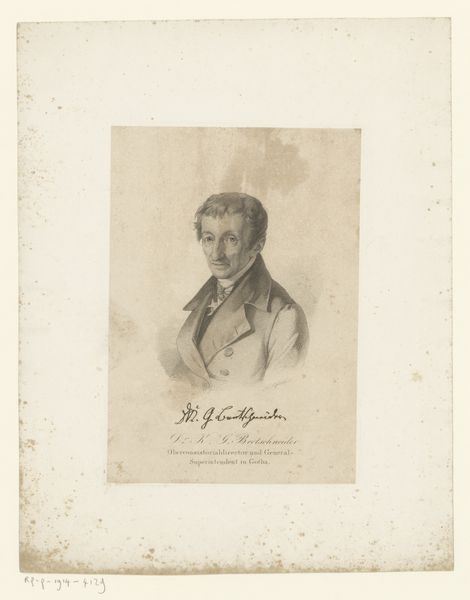
drawing, print, pencil, graphite
#
portrait
#
pencil drawn
#
drawing
# print
#
pencil sketch
#
charcoal drawing
#
pencil drawing
#
pencil
#
graphite
#
pencil work
#
realism
Dimensions: height 535 mm, width 356 mm
Copyright: Rijks Museum: Open Domain
Curator: Looking at this portrait, I immediately sense a formality, a certain reserved composure. The artist has masterfully captured a sense of authority in the sitter's gaze. Editor: Indeed. This is "Portret van S. J. M. van Moock," dating, as far as we can tell, from sometime between 1842 and 1887. The artist, Prosper Ferdinand Heyse, worked primarily in graphite and pencil, a medium that lends itself well to capturing nuanced expression. It is an excellent example of 19th-century portraiture. Curator: The use of graphite contributes so much. Observe how Heyse modulates light and shadow, creating a subtle drama on the subject's face. I read the whiteness of the paper around him as a void – almost a spotlight on his identity. What do we know about van Moock? His expression projects this sense of self-importance but who was he really? Editor: Biographical details are unfortunately scant. However, we can contextualize this portrait within the broader artistic conventions of the period. During the 19th century, commissioned portraits were vital displays of social standing and professional success within burgeoning bourgeois society. Van Moock, in his bearing and dress, seems to fulfill that role perfectly. The somber tone is very telling; what this artwork may lack in ostentation, it makes up for in psychological and social insight. Curator: Precisely. It feels deeply embedded within a cultural moment of self-fashioning. Consider how van Moock's identity is constructed, not merely represented. The tightly buttoned coat, the neat cravat – these details signify an adherence to social norms. But within these constraints, a trace of the individual still manages to glimmer through. It is as though his clothing confines him in the very realness of his daily expectations to lead well by example. Editor: Absolutely. And the artist, by choosing such an unforgiving medium, presents this sitter without excessive embellishment. The truth and constraints you have pinpointed make the piece memorable. I’m struck by how such seemingly straightforward portraiture can yield so much in terms of social history and artistic insight. Curator: I agree. It reminds us that every portrait is not merely an image, but also a meticulously crafted statement – a performance of identity played out on paper, echoing across decades. Editor: A quiet yet persistent dialogue that offers much about its subject and context – a beautiful combination for exploration.
Comments
No comments
Be the first to comment and join the conversation on the ultimate creative platform.
